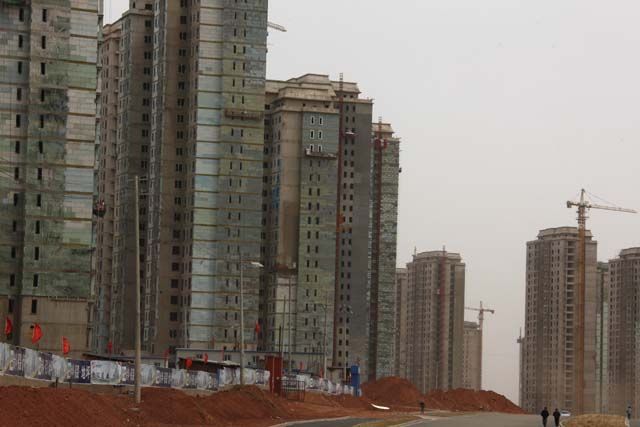If you have availed of a lump sum disbursement for your existing loan not linked to construction, you will not be able to do the same when you shift to a new loan.
 Both existing and potential property buyers can expect some good times. Banks have started cutting lending rates more aggressively.
Both existing and potential property buyers can expect some good times. Banks have started cutting lending rates more aggressively.
On Tuesday, HDFC Bank reduced its base rate by 15 basis points to 9.7 per cent.
And with Finance Minister Arun Jaitley exhorting banks to cut rates further last week, more action is expected on this front.
Some, like State Bank of India (SBI), the country's largest lender, is aggressively targeting customers by waiving off processing fees as an incentive to those wanting to shift their existing home loans to the bank.
The bank will also offer a top-up option to these borrowers. “We offer the lowest interest rates than anybody in the market currently.
That is the biggest incentive for shifting to us,” said B Sriram, managing director, SBI.
Does it make sense to shift now? If we consider SBI’s rates, it is 9.7 per cent for woman borrowers and 9.75 per cent for others with no cap on the loan amount.
HDFC charges 9.85 per cent for women and 9.9 per cent for others.
ICICI Bank charges 9.85 per cent for loans up to Rs 300,00,00and 9.95 per cent for loans of Rs 30-750,00,00.
Let's look at how the lower interest rates can benefit customers. If you have taken a loan of Rs 50 lakh for 15 years at 9.85 per cent, the equated monthly instalment (EMI) will work out to be Rs 53,272.
If you shift to SBI at 9.7 per cent, the new EMI will come down to Rs 52,937, a reduction of Rs 335 in monthly EMI.
Assuming you have already serviced the loan for five years, you can save Rs 40,230 in interest outgo over 10 years.
For a loan at 9.95 per cent, the interest savings will go up to Rs 67,227.
While there are some savings, borrowers may do well to wait out a few more weeks before deciding to shift.
The finance minister has been exhorting banks to cut their base rates and there is a possibility that a few banks will go ahead with cuts in the next few weeks.
“If you expect your existing bank to cut its base rate, it might make sense to wait.
Let the cut happen and then decide whether a shift still makes sense,” said Gaurav Gupta, chief executive officer, MyLoanCare.in.
Gupta believes customers should shift provided the remaining loan tenure is more than five years and the interest differential is, at least 50 basis points.
In the first example given above, Gupta says that while the customer saves Rs 40,230 in interest outgo over the life of the loan, he has to pay stamp duty and other additional expenses totalling about Rs 10,000 during the transfer process.
Keep a few things in mind before shifting: Borrowers from Maharashtra, Karnataka, Tamil Nadu and Rajasthan will have to pay the stamp duty if they transfer the loan from one bank to another (even if they have paid it earlier).
The stamp duty can vary between 0.15 per cent and 0.5 per cent of the outstanding loan.
If you have availed of a lump sum disbursement for your existing loan not linked to construction, you will not be able to do the same when you shift to a new loan.
According to Reserve Bank of India guidelines, disbursements have to be linked to the construction.
Some banks may ask for a title search report if the property is not approved by them. The report might cost Rs 1,000-3000.








